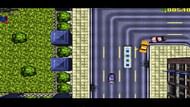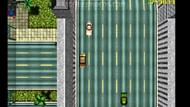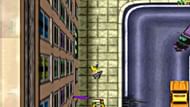Grand Theft Auto (GTA) 1 was released on November 28, 1997, and what followed changed the world as we know it. Born from some of the most creative minds, the franchise is responsible for shaping the industry into the behemoth it is today.
A mixed bag of ideas and ambitions that took the form of an unstoppable machine is what best describes the most popular action and adventure franchise in existence.
To truly be able to appreciate the GTA series, we need to go back in time. To a point when a group of zealous developers were about to show the world what nobody had even dreamt.
Exploring the breif history of GTA 1
The year is 1997. The most popular games are GoldenEye 007 and Final Fantasy VII. Rockstar Games does not exist. Instead, there is a team of developers by the name of DMA Design, working on one of the most ambitious projects of all time.
Grand Theft Auto 1 was initially called Race'n'Chase and by 1997 had been in what the staff called "a development hell" for years. Luckily for us, they were able to sort out all the problems and released GTA 1 in late 1997 for MS DOS and Windows.

The game's premise is very similar to what the basic theme of this franchise has evolved into. A group of individuals working their way up the ladder in the world of Organized Crime.
The game was grand in scale and ahead of its time. No other title stood a chance in comparison. Even back in 1997, GTA 1 had more than one radio station that aired custom-created music by made-up artists.

The game's story took place in three fictional cities, named Liberty City, San Andreas, and Vice City. These locations have continued to appear multiple times in the franchise's future. In 2004, San Andreas expanded from one city to a sprawling American state.
Nothing was compromised on the aspect of gameplay either. Players had the liberty to take their own route in missions, steal cars, roam freely, and explore each city and cause chaos whenever they wanted. It had a decently sized arsenal, with the context of its time of release, which contained a pistol, a machine gun, a rocket launcher, and a flamethrower.

The progression system was level based. To pass a level, players would have to do missions, which would give them points. Once the threshold was reached, they would advance further in the story. To gain points, they could also participate in activities (mostly crime) outside of missions, but that wouldn't fetch them nearly enough points to graduate to the next level.
Many of the mechanics from the first entry have remained within the franchise even till now. For instance, in GTA 1, some missions got triggered by answering phonecalls. Payphone assassination hits are a feature even in GTA Online and have been present in almost every game. To lose a wanted level star, players could drive in Spray Shops, which were later rebranded as Pay'n'Spray shops.
To top it all off, there was also a multiplayer feature available where players could battle against real-life counterparts via a LAN connection.
GTA 1 was a raging success and was ported to multiple gaming platforms in the following years like PlayStation in 1998 and on Gameboy Color in 1999, alongside its successor, Grand Theft Auto 2 . It managed to sell over three million copies, which for the late 90s is a massive feat.
DMA Design was later taken over by Take-Two Interactive Software and rebranded as Rockstar North, making it possible for some of the most iconic video games in human history to be made.
